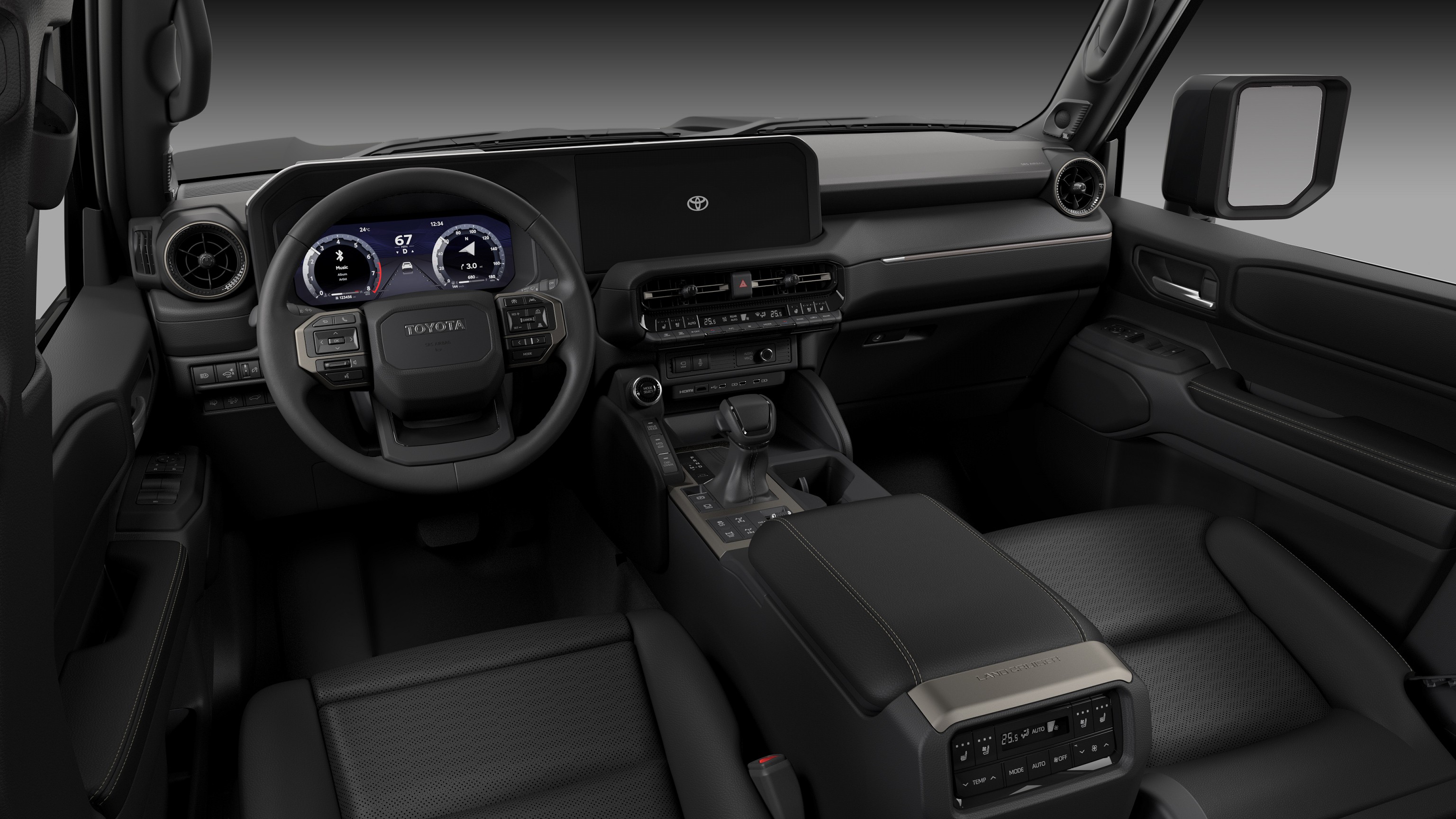
New Prado in Showrooms Mid-2024
TOYOTA Australia has confirmed the look, but not the final specs and price, of the long-awaited replacement for its top-selling Prado SUV.
The new Prado, on sale mid-2024 in Australia, is based on the wheelbase of the Land Cruiser 300 and shares many body components (and style) of the new Lexus GX, also due in Australia next year.
The new Prado is the latest in a long line of the nameplate that has been in Australia since 1996. Its popularity has been based on its off-road ability (although many rarely leave the suburbs), cabin flexibility, strength and style.
The new-generation Prado adopts a new design direction that is sweeping through design studios of many brands, particularly since it was popularised by the new Land Rover Defender. The square, boxy shape has also ben employed in the 2024 Hyundai Santa Fe.
The front end is based around a rectangular grille and tri-beam headlights, with a low-set front cowl to improve forward visibility. Toyota said that it has muscular wheel arches and strong horizontal lines to give a sense of strength, with a low waist line that improves visibility for occupants.
At the rear, the Prado has a vertically oriented tailgate and simple tail-light signature to complement the front end, with silver lower bumpers at both the front and rear of the vehicle. The boot opening is a lift-up design, copying the 300 but differing from the outgoing Prado’s side-swing door.
The new SUV is 4920mm long (up 100mm on the current model); 1988mm wide (up 95mm); and 1860mm high (up 20mm). It rides on a wheelbase of 2850mm which is 60mm longer and the same as the Land Cruiser 300 and forthcoming Lexus GX.
The platform is also the same as the 300, which is Toyota’s latest ladder-frame design designated TNGA-F. Toyota claims it is 50 percent more rigid than the current Prado which helps to increase overall vehicle rigidity by 30 percent.

This more rigid platform allows for improved suspension performance with greater wheel articulation for off-roading and better on-road handling and ride comfort.
Toyota said that wheel articulation is improved further with Toyota's stabilizer-bar control system which allows the front stabiliser bar to be disconnected for above-average wheel articulation off the road, while reverting to a connected system for low body roll on the road.
Electric power steering replaces the current hydraulic system and is claimed to provide a crisper steering feel and enhanced low-speed maneuverability on-road, maximise control when off-roading, and allow compatibility with active safety systems such as lane-departure assist.
Toyota is offering the Prado with a choice of five engines depending on the market. In Australia, it gets the 1GD-FTV 2.8-litre turbo-diesel four-cylinder engine but upgraded with 48-volt technology to create a mild hybrid for improved urban fuel consumption.
This engine produces 150kW of power and 500Nm of torque, the same as the current model. It drives all four wheels via a new direct-shift eight-speed torque converter automatic transmission, replacing the existing six-speed unit.
The cabin receives similar design treatment as the outside with dual digital screens for the instrument cluster and multimedia system. Seating is for five or seven occupants depending on the variant and will be offered with a full suite of Toyota Safety Sense active safety technologies2.
Toyota will announce further details closer to the vehicle's Australian launch in 2024.
Once you've found the right car, the next step is sorting out car finance that actually works for your budget. Credit One is Australia's best-reviewed finance broker, with 3,000+ five-star Google reviews from customers who've been through the process. Check out Credit One reviews to see what people say, or head straight to the loan repayment calculator to see what the numbers look like.
